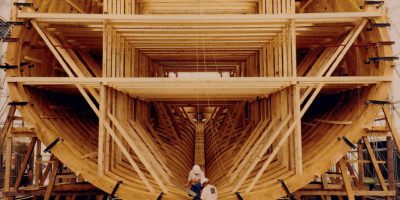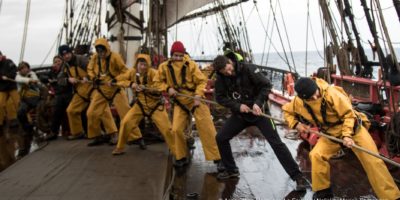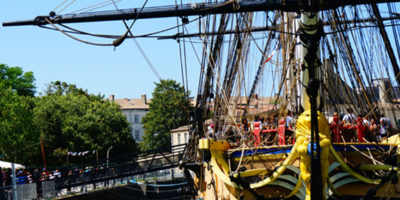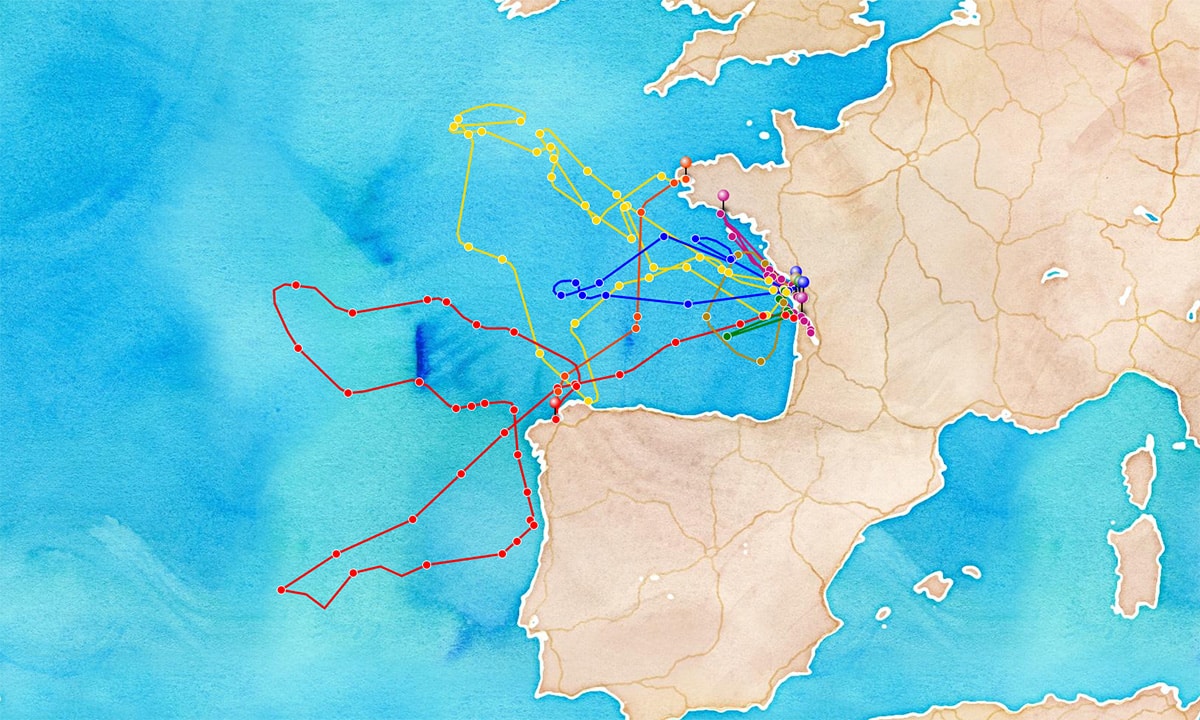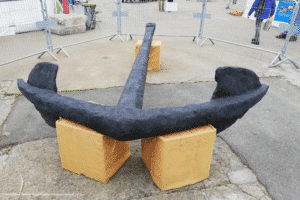At the end of the 18th century, France was once again at the head of a powerful fleet, capable of competing with the English Royal Navy. This rivalry is explained by the economic stakes, represented by the colonial territories held by each of the two maritime powers. The revolt of the 13 American colonies gave the French Navy the opportunity to take its revenge on its historic enemy. During this period, it was full steam ahead for the French Arsenals. So at Rochefort, in 1779, for example, 4 frigates began to be constructed at the shipyard and 13 frigates were launched between 1777 and 1780.
The context
What is the ``Arsenal de Rochefort``
The Hermione was built at the “Arsenal de Rochefort”, which was the birthplace of 550 ships in the form of vessels, frigates, corvettes (small warships) and other craft, between 1666 and 1927. Under Louis XIV and spurred on by Colbert, Secretary of State for the French Navy, France acquired a veritable fleet of warships and merchant vessels to compete with the English and Dutch fleets and to conquer new territories. In 1666, Rochefort was chosen for the establishment of an arsenal between Brest and Bayonne, on the banks of the Charente.
For 250 years, the Arsenal was regularly the construction site of warships for the French navy. The Arsenal represented an important place for discussion, skill sharing, and new movements, as well as being a technical centre for shipbuilding. Rochefort is a city known for its innovation and experimentation, constantly adapting to the constraints of its environment and the industrial changes of the time. The Hermione sprang into life in the heart of all this, and was representative of the ships to be seen at the end of the 18th century. The ship’s construction reflects the height of the French Navy’s sailing ship era, a glorious epoch when the French fleet won decisive victories, especially during the American War of Independence.
Ship's History
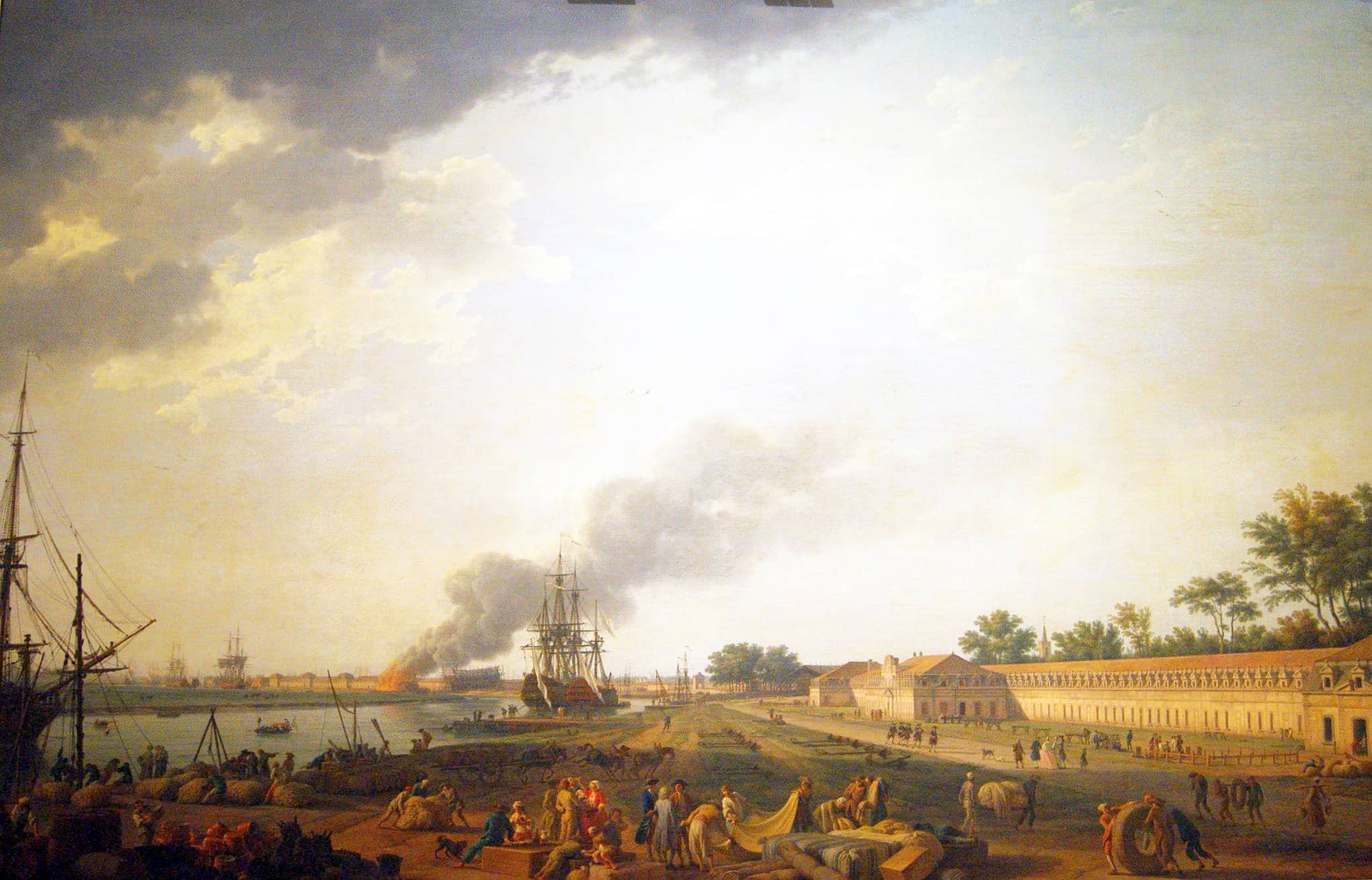
View of Rochefort by Joseph Vernet. ©BNF
The Hermione began life in the shipyard on the Charente’s right bank in the Arsenal de Rochefort, from December 1778 onwards.In addition to technical expertise, the speed of its construction is also explained by the urgency of the war, a large workforce and the availability of materials at the site of the arsenal. Hundreds of carpenters, blacksmiths, drillers, nailers, and caulkers, which numbered convicts among them were employed for a total of over 35,000 days of work.
.
The frigate’s characteristics
Besides the fact that it is a technically accomplished ship, the Hermione belongs to a category known as light frigates, characterised by their speed and manoeuvrability. It is a ship typical of those used in the American campaign.The Hermione is a 12-pounder frigate armed with 32 guns in the 18th century which means: 26 x 12-pounder cannon on her battery deck and 6 x 6-pounder cannon on her forecastle. 12-pounder refers to the weight of the cannon balls used in the cannons in the 18th century, 12 pounds being just under 6 kilos.
At 66 metres long overall and 11.5 m wide, the ship has three vertical masts whose size can be adjusted, a sail area of up to 3,300 m² and a complex rigging system with 26 km of ropes, requiring a crew of 250 to 300 people.
From 28 April 1779 to 11 May 1779, the Hermione was armed with the necessary embarkation for a long campaign, which lasted about 6 months and ended in November 1779. It was the young ship’s lieutenant, Louis-René-Madeleine Levassor de Latouche (called La Touche-Tréville after 1788, future vice-admiral and commander-in-chief of Napoleon‘s navy) who was tasked with this mission.
During the month of January 1780, the hull of the Hermione received a copper lining made of 1,100 sheets of metal. This lining was to protect the hull from shipworm, and to prevent seaweed and shells from attaching to the hull, which improved the frigate’s speed.
After a successful first campaign and getting her hull lined with copper in January, the Hermione was entrusted with a secret mission by order of King Louis XVI. It consisted of taking the Marquis de La Fayette to Boston in order to announce financial and military support for the American Insurgents. The frigate departed on 11 March, 1780 from the harbour at the island of Aix with a crew of 316 people. After a 38-day crossing, the Hermione arrived in Boston where La Fayette met with General Georges Washington to announce the imminent arrival of French reinforcements.
This campaign was much longer than the previous ones (nearly two years) and the aim was to aid the French squadron based in the United States with their war against the British. The Hermione protected allied trade and attacked enemy traders while conducting surveillance, supply or signal relay missions.
This was one of the Hermione’s most memorable battles. On 7 June 1780, near Long Island, the Hermione fought four English ships including the English frigate, the Iris, for an hour and a half with continuous fire. 260 cannon shots were fired from the Hermione as well as 1,250 rifle and blunderbuss shots. Ten men were killed, and 37 were wounded including the commander and his second in command.
5,500 men from the Comte de Rochambeau’s expeditionary force, sent by Louis XVI from the city of Brest, disembarked in Newport, Rhode Island to support the American revolt.
The Hermione was charged with a representation mission in Philadelphia. This involved holding a reception for the United States Congress and the Pennsylvania State Council, at an official dinner with the Marquis de La Fayette and Samuel Huntington, President of the Continental Congress. This event was very symbolic of the friendship between the two allied nations.
On 21 July, 1781, off Île Royale (now Cape Breton Island), the frigates Hermione and Astrée, commanded by La Pérouse, encountered a convoy escorted by six English ships, which they attacked. This was the naval battle of Louisbourg, with combat lasting 2 hours during which 509 cannon shots, 100 pierrier swivel gun shots and 1,700 rifle or blunderbuss shots were fired from the Hermione. Two English ships struck their colours (lowered their flags in surrender), the 14-gun 9-pounder Jack was captured, material damage was significant, particularly to the rigging, and a total of 22 casualties were reported on the Hermione. This confrontation was headed by the auxiliary frigate lieutenant Mullon who was on board, and it was later painted by Auguste-Louis de Rossel de Cercy.
Until 10 September, the Hermione docked in Boston for repairs. This meant she had arrived too late to take part in the Battle of the Chesapeake, but she did join the siege of Yorktown in October 1781. This battle saw the American Insurgents and their French allies commanded by the Comte de Rochambeau fighting the British commanded by Lord Cornwallis. After 21 days of combat, the latter surrendered, with a quarter of the British forces engaged in the war. The victory of Yorktown resulted in the Treaty of Versailles, which was signed in 1783, and the independence of the thirteen British colonies, which became the United States of America.
Once she had fully accomplished her mission in America, the Hermione set sail on 2 February from Cape Henry. The return crossing was very fast, as they were running downwind, so in just 23 days and on 25 February, the Hermione dropped anchor in the Bay of Biscay on the island of Aix.
After being refitted in May and June of the same year, the Hermione set off again with a new captain, Lieutenant Du Pérou, at her helm, for an even more distant destination – the Bay of Bengal and the coasts of India.
After her campaign in the Indian Ocean, the Hermione stayed in Rochefort for a few years. During that time, there was a long operation to restore her hull, described as a semi-refit. From 1789, 450 different procedures were carried out on the frame both inside and outside to restore it to working order
In September, the Hermione was given the new mission of escorting a convoy of twelve ships between the Loire estuary and Brest who were transporting a load of 65 guns, cast in Indret, among other goods. On 20 September, 1793, commanded by an inexperienced crew, barely out of the Loire estuary and through the fault of a local pilot (Guillaume Guillemin), the frigate sank on the rocks off Le Croisic, on the Plateau du Four. The hull was gutted on the starboard side and slowly ran aground on the shoals, giving the crew time to be rescued. The frigate could not be saved however and sank.
The anchor, part of the rudder and three guns were raised. The anchor is currently kept at the Château des Ducs de Bretagne in Nantes and was exhibited in the village during the Débord de Loire festival to celebrate the arrival of the Hermione’s replica in 2019.


